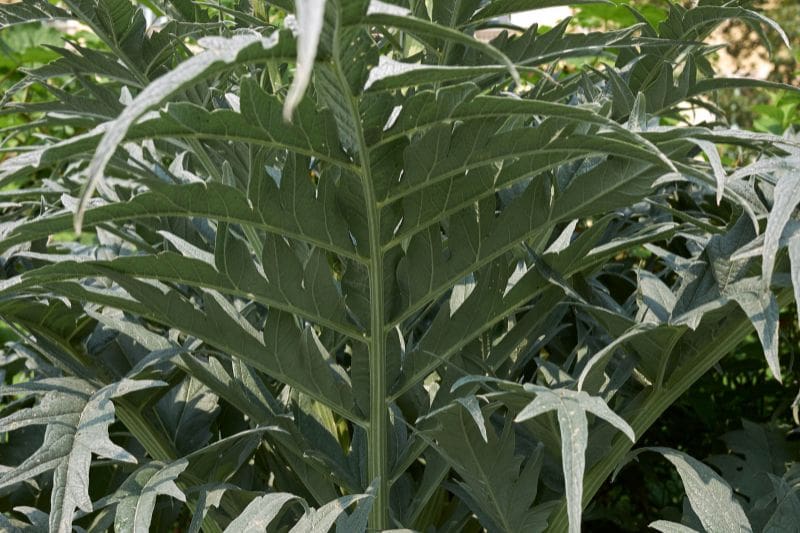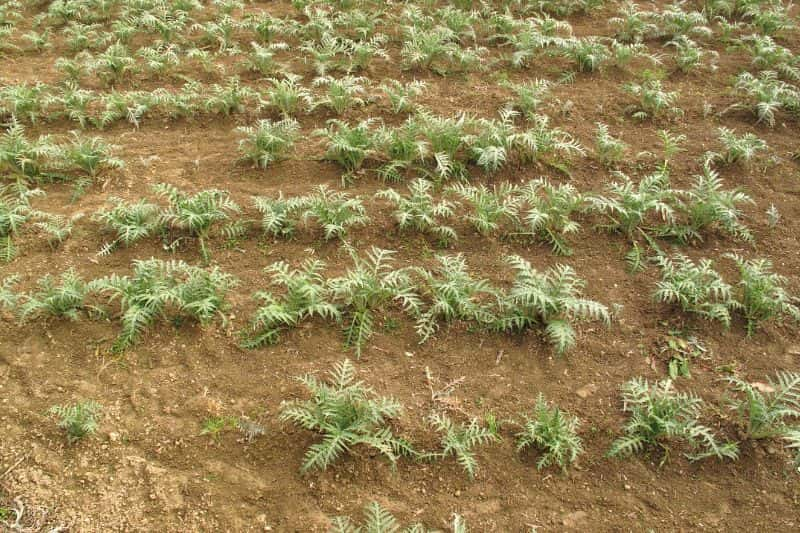Vegetable plant of family Asteraceae, native to Mediterranean regions, cardoon (Cynara cardunculus) is quite close to its cousin the artichoke by its majestic, imposing foliage, flowering in large violet heads, and also by flavour of its fleshy petioles called cardes. Too little eaten (except in Lyon region where it is a true institution, especially for Christmas), cardoon is nevertheless easy to grow in vegetable garden. Its only requirement is blanching of edible stems (leaves are not edible). Rich in two species, thorny or not, cardoon perhaps deserves a (large) place in your vegetable garden.

Which variety to choose?
Quite obviously, cardoon and thistle are closely related! And this kinship becomes even clearer when looking at the two species most often sold:
- Thorny cardoons with fuller midribs, with a stronger taste and flavour but difficult to peel. Among main varieties are ‘Épineux argenté de Plainpalais’ which holds an AOC, and ‘Épineux genevois’, holder of an AOP. The ‘Red Cardoon of Algiers’ is moderately thorny and has reddish midribs at the base
- Spineless cardoons, easier to grow and to peel. Varieties include ‘Spineless Full White Cardoon’ with well fleshy midribs, ‘Improved White’, and ‘Vert de Vaulx-en-Velin’, very well adapted to regions with harsh winters.
When to sow cardoon?
Cardoon seeds are sown outdoors in mid-May, once any risk of frost is finally ruled out. Soil must be well warmed.
Sowing can be brought forward slightly by sowing in buckets under a cold frame. In that case, sow in April or May.
Five months must elapse between sowing and harvest of the midribs, from September and throughout winter in regions with mild winters.
Where to sow cardoon?
Cardoon requires fertile soil, rich in organic matter, perfectly drained, and that remains sufficiently cool. However, soil must not be waterlogged or saturated with moisture. Originating from southern regions, cardoon likes heat. It is therefore essential to plant it in full sun. And above all in a sheltered spot protected from winds and cold draughts to avoid plants toppling in gusts.
With an imposing habit (cardoon can reach 2 m high and 1 m to 1.50 m wide), cardoon needs space. Give it a generous, isolated area in your vegetable garden so it can settle comfortably. But beauty of its grey‑green or grey‑blue leaves, largely veined, dissected and undulate, allows integrating cardoon into an ornamental bed. Especially as it flowers in quite attractive violet heads.
How to sow it?
Outdoor sowing is done in small pockets.
- Work and loosen soil deeply with a spade, taking care to remove weeds and stones
- Incorporate compost deeply
- Mark out rows spaced at least 1.50 m
- Place 3 or 4 seeds in each pocket. Pockets should be at least 1 m apart
- Cover with soil and firm gently
- Water with a fine spray.
When seedlings show a few leaves, thin out to keep only the most vigorous seedling in each cavity.
To give yourself the best chance, do not hesitate to sow some cardoon seeds in buckets under a cold frame. You can transplant the plants in May to refill beds.

Equipment required
- An rake
- A spade or a digging fork
- A hoe to mark out rows
- A watering can
To learn more
- Cardoon: planting, cultivation and harvest
- How to blanch cardoons?
































Comments